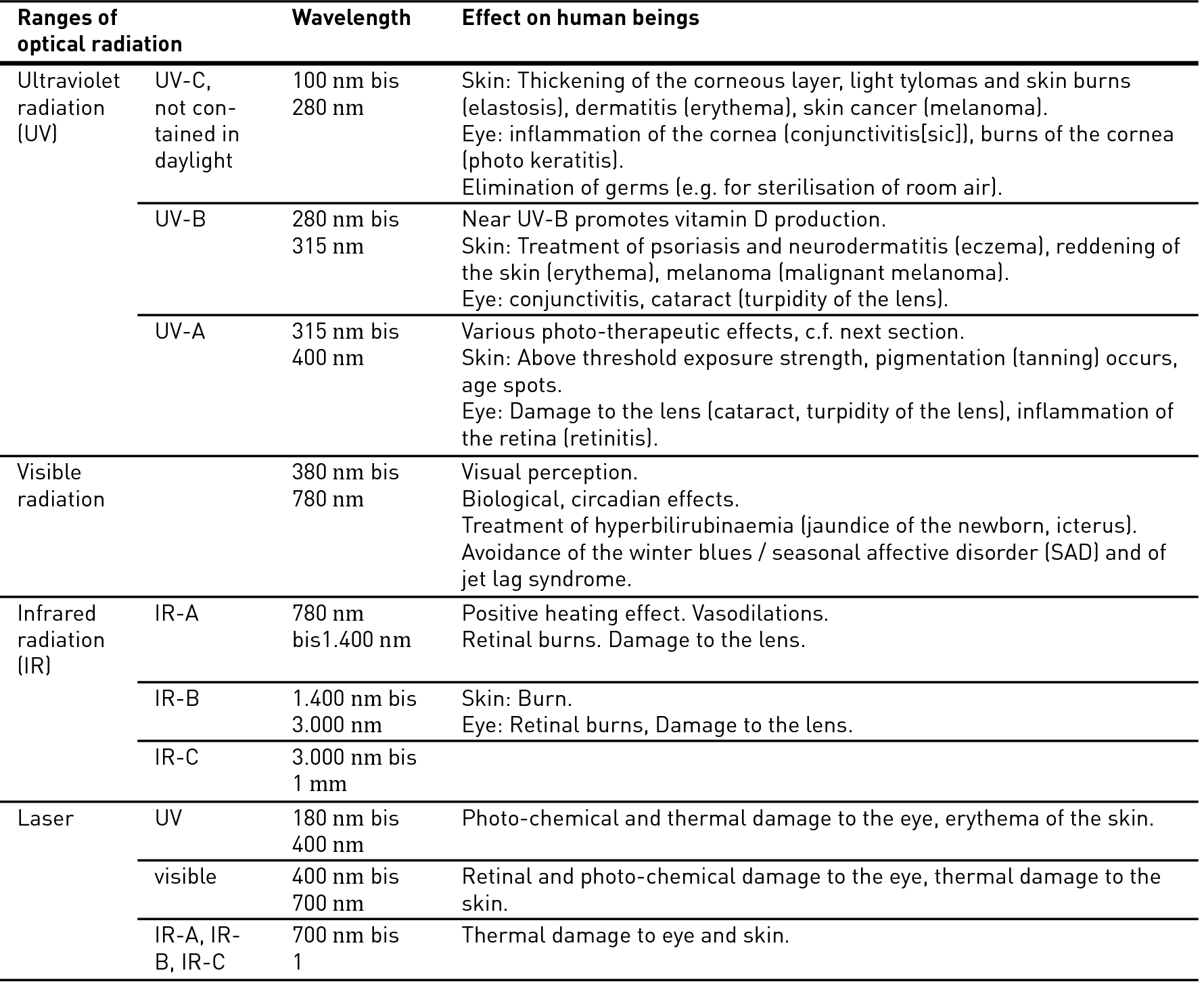Optical radiation refers to any electromagnetic radiation in the wavelength range between 100 nm (nanometres) to 1 mm (millimetre). The optical radiation is subdivided into further areas according to table. Positive as well as negative effects of radiation on human beings depend strongly on wavelength and exposure, i.e. the product of irradiation intensity and exposure time. In the case of damaging effects, the degree of damaging effects is identified through exposure threshold values which are part of occupational health and safety.
The German "Regulation on the protection of employees against hazards from artificial optical radiation" (OStrV) of 27 July 2010 pertains to the protection of employees against damage to eyes and skin due to exposure to artificial optical radiation including LASER radiation (Light Amplification by Stimulated Emission of Radiation). It does not apply to natural radiation. It defines the spectral regions of artificial radiation, points out possible damaging effects (q.v. table) and defines the exposure threshold value regarding occupational health and safety.
